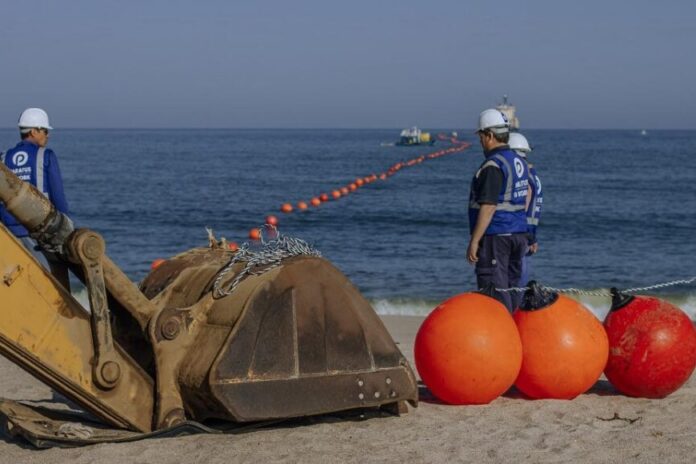When complete, its three cable systems will connect Argentina, Uruguay, Brazil, the US, Bermuda, Portugal, Togo, Nigeria, Namibia and South Africa
Google has announced its latest transatlantic cable Nuvem which, once complete in 2026, will complete a Southern Atlantic fibre ring comprising its Equiano African cable connecting that continent, Nuvem and its Firmina cable system connecting North and South America.
The Nuvem cable will connect Portugal, Bermuda, and the United States but besides the ready for service date, Google did not release any details about the design capacity and other participants in the project.
We do know however that Firmina, which connects the United States with Brazil, Uruguay and Argentina, will have 16 fibre pairs with a design capacity of around 240Tbps. Meanwhile Equiano, which connects Portugal to Cape Town with branching units to Nigeria, Togo, Namibia and St Helena, has 12 fibre pairs and design capacity of 144Tbps.
In the US, Nuvem will land in South Carolina, almost certainly at DC Blox’s new Myrtle Beach facility where Google’s Firmina cable landed earlier this year. In Portugal, chances are Nuvem will land at Sesimbra near Lisbon, where Google’s Equiano cable lands.
Nuvem will also test the boundaries of undersea technology if Google’s previous cables are anything to go by. For example, Equiano uses space-division multiplexing and was the first subsea cable to incorporate optical switching at the fibre-pair level, rather than the traditional approach of wavelength-level switching.
“We just turned up the Equiano cable in Portugal and we are in the process of completing the Firmina cable in South Carolina,” said Google Cloud VP Global Network Infrastructure,” Brian Quigley. “Alongside Firmina and Equiano, it will create important new data corridors connecting North America, South America, Europe, and Africa — serving as the underwater roots that strengthen the intercontinental network lattice.”
Bermuda happy
The choice of landing in Bermuda is interesting given others have bypassed the island nation. According to PwC, Bermuda imposes no taxes on profits, income, dividends, or capital gains, has no limit on the accumulation of profit and has no requirement to distribute dividends. Ironically many undersea cable companies are based there as private limited companies.
However, the government has done a lot to attract a cable – including passing new legislation to create cable corridors and streamline permitting – and the net result has been it now has its first direct connection to Europe.
“The Bermuda Business Development Agency has long advocated that Bermuda’s centrality makes it an ideal landfall and interconnection point for submarine cables between the Americas, Europe and Africa and we are so excited these efforts have borne fruit,” said BDA CEO David Hart.
“With around 95% of the world’s communications being carried on submarine cable networks, Bermuda’s role as an international data-transit switch will provide increased network resiliency and redundancy to countries on both sides of the Atlantic for decades to come,” he added.
Portugal has also been making moves to bolster its digital economy. “Google’s investment incorporates our vision for Portugal in the telecom and data sectors: to establish our country as a thriving connectivity gateway for Europe, fostering robust connections with other continents,” said Portugal’s Infrastructure Minister João Galamba.
“Our goal is to transform these information highways into catalysts that draw in supplementary investments in cutting-edge technology sectors propelling the nation towards an effective digital transformation,” he said. “This aspiration has been our firm focus in recent months, driving our efforts to attract this type of investments by improving our communication infrastructures and by defining a clear roadmap for the sector.”
Oh, and Nuvem means cloud in Portuguese.
Image: Google’s Equiano cable coming ashore in Namibia. Picture source Paratus Namibia, which has launched new internet packages on the back of the cable’s activation.



